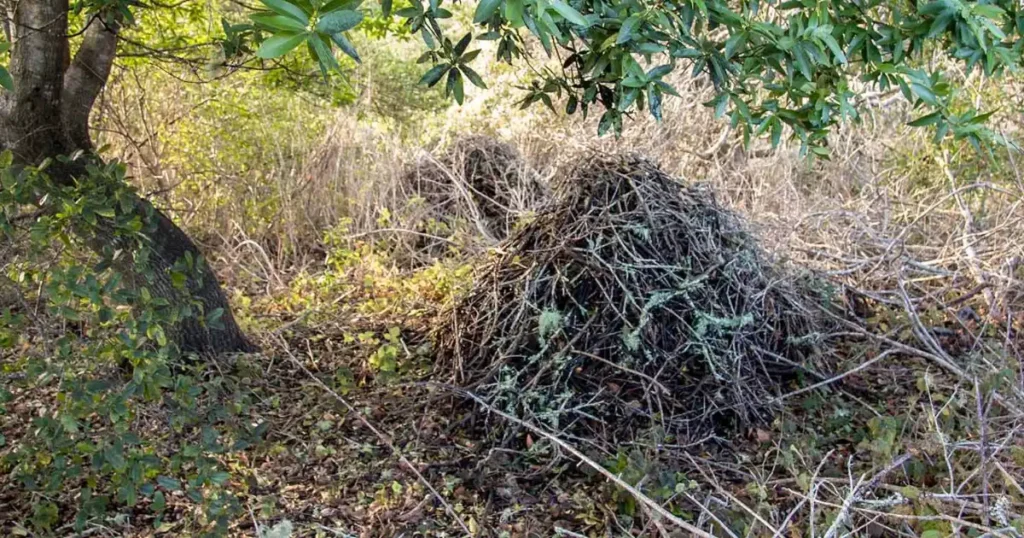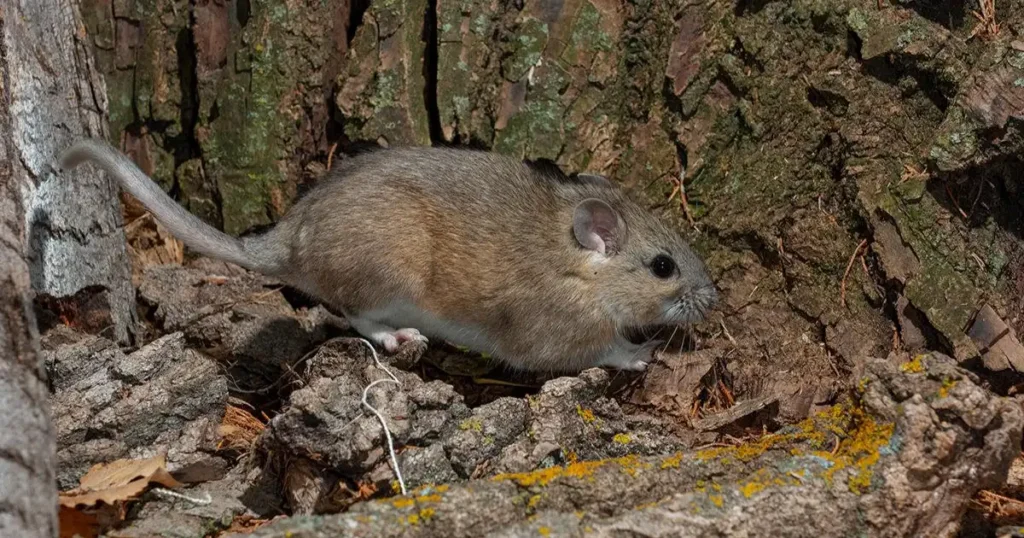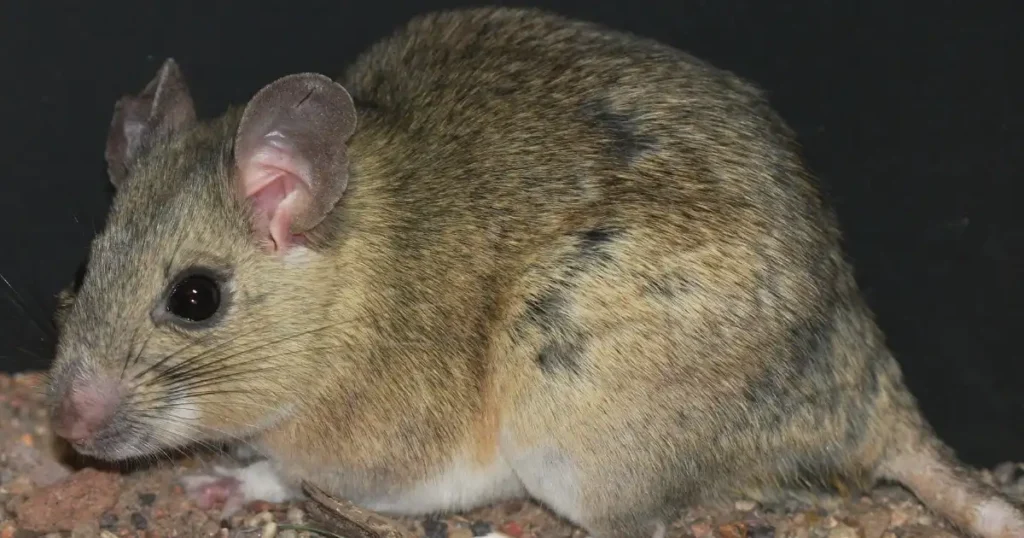
Wood rats, also known as pack rats, are fascinating creatures renowned for their distinctive nesting habits. Their nests, often referred to as middens, are intricate structures that showcase their remarkable building skills and survival instincts. In this comprehensive guide, we delve deep into the world of wood rat nests, exploring their construction, purpose, and ecological significance. This detailed analysis will provide you with a thorough understanding of these intriguing nests, helping you appreciate the complexity and ingenuity of wood rats.
Wood rat nests, or middens, are elaborate constructions made from a variety of natural materials such as sticks, leaves, rocks, and other debris. These nests serve as both shelter and storage for wood rats, providing a safe haven from predators and harsh environmental conditions. The nests can vary significantly in size and complexity, depending on the species of wood rat and the availability of building materials.

Wood rats are meticulous builders. The construction of a nest typically involves several stages:
1. Foundation: The base of the nest is usually made of larger sticks and rocks, providing a sturdy foundation.
2. Framework: Smaller sticks and twigs are interwoven to create the main structure of the nest. This framework is crucial for maintaining the integrity and stability of the nest.
3. Insulation: Leaves, grass, and other soft materials are added to insulate the nest, keeping it warm during cold weather.
4. Storage Chambers: Wood rats create multiple chambers within the nest for storing food. These chambers are strategically located to ensure easy access.
5. Entrances and Exits: Multiple entry and exit points are built into the nest, allowing wood rats to escape quickly if threatened.
Materials Used in Wood Rat Nests
Wood rats are opportunistic gatherers, utilizing a wide range of materials to build their nests. Common materials include:
- Sticks and Twigs: These form the bulk of the nest's framework.
- Leaves and Grass: Used for insulation and comfort.
- Rocks and Pebbles: Often incorporated into the foundation.
- Human-made Objects: Wood rats are known for their tendency to collect shiny objects, which they sometimes incorporate into their nests.

Wood rat nests serve several critical functions:
Shelter
The primary function of a wood rat nest is to provide shelter. The intricate construction offers protection from predators such as snakes, owls, and larger mammals. The nest's insulation also helps regulate temperature, keeping the wood rats warm during winter and cool during summer.
Food Storage
Wood rats are known for their habit of collecting and storing food. Their nests often contain multiple chambers dedicated to food storage, ensuring they have a constant supply of food even during harsh conditions. This behavior is particularly important for their survival during winter months when food sources are scarce.
Breeding Grounds
Wood rat nests also serve as breeding grounds. The secure and insulated environment of the nest provides an ideal setting for raising young wood rats. Female wood rats typically give birth to several litters each year, and the nest plays a crucial role in the survival of the offspring.
Ecological Significance of Wood Rat Nests
Wood rat nests are not only important for the survival of wood rats but also play a significant role in the ecosystem:
Biodiversity
Wood rat nests provide habitats for various other species. Insects, small mammals, and even reptiles often inhabit abandoned wood rat nests, contributing to local biodiversity.
Seed Dispersal
Wood rats inadvertently aid in seed dispersal. As they collect and store seeds, some of these seeds are not consumed and eventually germinate, contributing to plant diversity and forest regeneration.
Soil Enrichment
The decomposition of materials within wood rat nests enriches the soil. This process adds nutrients to the soil, promoting plant growth and contributing to the overall health of the ecosystem.
Challenges Faced by Wood Rats and Their Nests
Despite their ingenuity, wood rats face several challenges that threaten their nests:
Habitat Destruction
Human activities such as logging, urbanization, and agriculture lead to habitat destruction, reducing the availability of suitable nesting sites for wood rats.
Predation
While wood rat nests offer protection, they are not entirely immune to predators. Larger predators can sometimes dismantle the nests to reach the wood rats inside.
Climate Change
Climate change poses a significant threat to wood rats. Changes in temperature and precipitation patterns can affect the availability of food and nesting materials, making it harder for wood rats to survive.

Wood rats, being nocturnal creatures, exhibit fascinating behaviors around their nests that are crucial for their survival:
Nocturnal Activity
Wood rats are primarily active at night. They spend their nights foraging for food and materials to enhance their nests. This nocturnal lifestyle helps them avoid many daytime predators and reduces competition for resources.
Territorial Behavior
Wood rats are highly territorial. Each nest is typically occupied by a single wood rat or a small family unit. They fiercely defend their nests from intruders, using vocalizations and physical displays to ward off potential threats. This territoriality ensures that each wood rat has sufficient resources within its immediate vicinity.
Communication and Social Structure
Wood rats communicate with each other through a combination of vocalizations, scent markings, and physical gestures. These communication methods are essential for maintaining social structures and coordinating activities such as foraging and nest building.
Seasonal Variations in Nesting Behavior
The behavior of wood rats and the structure of their nests can vary significantly with the changing seasons:
Spring and Summer
During the warmer months, wood rats are particularly active in expanding and fortifying their nests. They gather fresh plant materials to enhance insulation and comfort. This period is also crucial for breeding, with female wood rats giving birth to multiple litters.
Autumn and Winter
As temperatures drop, wood rats focus on stockpiling food within their nests. The nests are fortified to provide maximum insulation against the cold. Wood rats may also reduce their activity levels to conserve energy during harsh winter conditions.

Wood rat nests are integral to the ecosystems they inhabit, influencing various ecological processes:
Nutrient Cycling
The materials gathered by wood rats for their nests eventually decompose, contributing to the nutrient cycle. This decomposition process enriches the soil with organic matter, promoting healthy plant growth and supporting diverse plant communities.
Microhabitat
The complex structure of wood rat nests creates microhabitats for a variety of organisms. Insects, fungi, and microorganisms thrive within the nests, forming intricate ecological networks. These microhabitats contribute to the overall biodiversity and ecological balance of the area.
Food Web Dynamics
Wood rat nests play a role in the food web dynamics of their habitats. They provide a food source for predators such as snakes, owls, and larger mammals. Additionally, the stored food within the nests attracts other animals, creating dynamic interactions between species.
Wood rats and their nests often come into contact with human activities, leading to various interactions and sometimes conflicts:
Impact of Urbanization
As urban areas expand, wood rats are forced to adapt to changing landscapes. While some wood rats can thrive in urban environments, utilizing human-made structures for nesting, others may struggle with the loss of natural habitats. Urbanization can also lead to increased encounters with humans, resulting in potential conflicts.
Conservation and Coexistence
Promoting coexistence between humans and wood rats involves understanding and mitigating conflicts. Conservation efforts focus on preserving natural habitats and creating awareness about the ecological importance of wood rats. Strategies such as habitat restoration and the establishment of wildlife corridors help ensure the survival of wood rat populations.
Ongoing research and technological advances provide deeper insights into the lives of wood rats and the importance of their nests:
Radio Tracking and GPS
Modern tracking technologies, such as radio collars and GPS devices, allow researchers to monitor the movements and behaviors of wood rats with unprecedented accuracy. This data is invaluable for understanding their nesting habits, foraging patterns, and responses to environmental changes.
Remote Sensing and Imaging
Remote sensing technologies and high-resolution imaging offer detailed views of wood rat habitats. These tools help scientists assess the impact of environmental changes and human activities on wood rat populations, guiding conservation efforts.
To ensure the long-term survival of wood rats and their nests, future conservation efforts must address emerging challenges and leverage technological advancements:
Climate Resilience
As climate change continues to alter ecosystems, conservation strategies must focus on enhancing the resilience of wood rat populations. This includes protecting and restoring habitats that provide critical resources and buffer against climate extremes.
Community Engagement
Engaging local communities in conservation efforts is essential. Educational programs and citizen science initiatives can foster a sense of stewardship and encourage proactive measures to protect wood rat habitats.
Policy and Legislation
Effective conservation requires supportive policies and legislation. Advocacy for the protection of wood rat habitats and the implementation of wildlife-friendly practices in urban planning can make a significant impact.
If you find yourself dealing with wood rats or any other wildlife invading your property, it's crucial to seek professional help. Critter Stop is a renowned humane wildlife removal company that excels in rat extermination. With an outstanding reputation for providing high-quality work and exceptional customer service, Critter Stop ensures that your wildlife problems are addressed effectively and humanely.
Critter Stop offers comprehensive solutions for rat removal, ensuring your home is safe and free from unwanted critters. Their team of experts is dedicated to humane wildlife management, making them the best choice for your pest control needs.
Don't let wood rats disrupt your peace—contact Critter Stop at (214) 234-2616 today for professional and reliable rat extermination services.
Visit our Critter Library and learn more about our furry friends